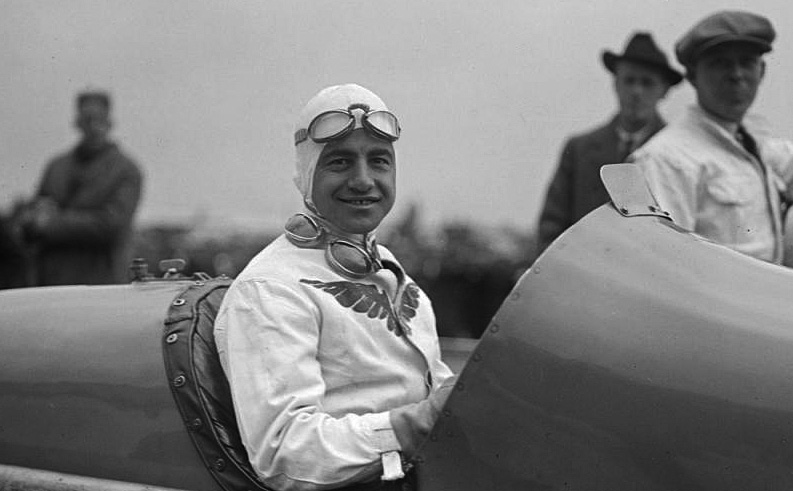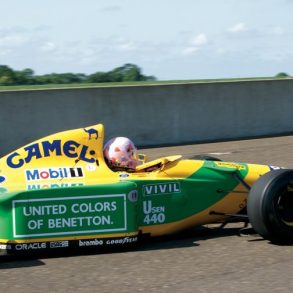Ralph DePalma Biography

Born in 1883 the DePalma family left Italy for America nine years later. Like his modern-day compatriot he could race and win in any car he drove over board tracks, speedways and road courses. In twenty-seven years of competing it is estimated that he won more than 2,000 of the 2,800 races that he entered.
Growing up in Brooklyn, New York, he earned money-delivering groceries and soon had the money to buy a bicycle. As a teenager he tried his hand at bicycle racing but found that he lacked the stamina that the sport required. Motorcycle racing held more promise and he competed for approximately three years winning several minor events but it was in racing on four wheels that he would make his name.

DePalma had spent his youth building and maintaining bicycles and then motorcycles and soon put together a car with any spare or left-over parts that he could find. The car never raced but was sold at a nifty profit. While working as a mechanic he was offered an opportunity to race a car called the Allen-Kingston by an early supporter named Fred Moscovics.
His first race was the Fort-George hillclimb in 1908. One of his fellow competitors was Barney Oldfield who in later years would become a bitter rival. Not having spent a lot of time in the new car DePalma inadvertently allowed his car to creep past the starting line. Ordered to back up he placed his car in reverse just as the starting gun went off. With his car heading in the wrong direction he naturally did not have a good showing. Chastised he returned to his mechanic duties when Moscovics gave him another chance.
Soon there was no looking back as DePalma began to win races in the Allen-Kingston. This brought him to the attention of the Fiat factory, one of the if not the leading team of the day. After establishing himself as a topflight driver he left Fiat for Mercedes. One of his most famous races was the 1912 Indianapolis 500. Leading by five laps with only 4 laps to the finish a connecting rod in his big gray Mercedes failed. Nursing the stricken car the remainder of the race, its big engine making terrible noises, the specter of the second place National driven by Joe Dawson bore down on them. The lead, which had been 5 laps, became miles and the miles became yards. With the checkered flag now in sight the Mercedes gave one last blast before turning silent. The crowd cheered DePalma when he and his mechanic got out to push but this day would belong to Dawson as he flashed by to take the victory.

Not wishing to be on the same team as the swaggering Oldfield he quit on the spot. Oldfield was well pleased until he found out that DePalma had announced that he would modify his old Mercedes and enter as a private individual.
Playing a waiting game he watched as the leading cars including Oldfield wore out their tires. Ten laps from the end he saw his chance and sprinted into the lead. In front of him was Oldfield but as soon as he passed his rival he made signals to his pit that he was coming in. Seeing this Oldfield decided to make a pitstop also to replace worn tires. As Oldfield’s Mercer was having his tires replaced he glanced onto the track just as DePalma was driving by. It dawned on Oldfield in a second, he had been tricked, DePalma never planned to stop. In a rage the Mercer leapt out of the pits. Oldfield, for all his braggadocio was not without talent or courage. For the last 6 laps he gave everything that he had to close the gap but fell 200 yards short as DePalma took the flag.
It took two years but in 1915 DePalma had his 500 but with America entering the war he enlisted in the Army Air Service. After the Armistice DePalma continued to race and placed 2nd to Jimmy Murphy in the 1921 French Grand Prix. DePalma finally retired in the early 1930’s and continued to work in the automotive field as a consultant. He died at the age of seventy-two in 1956.











